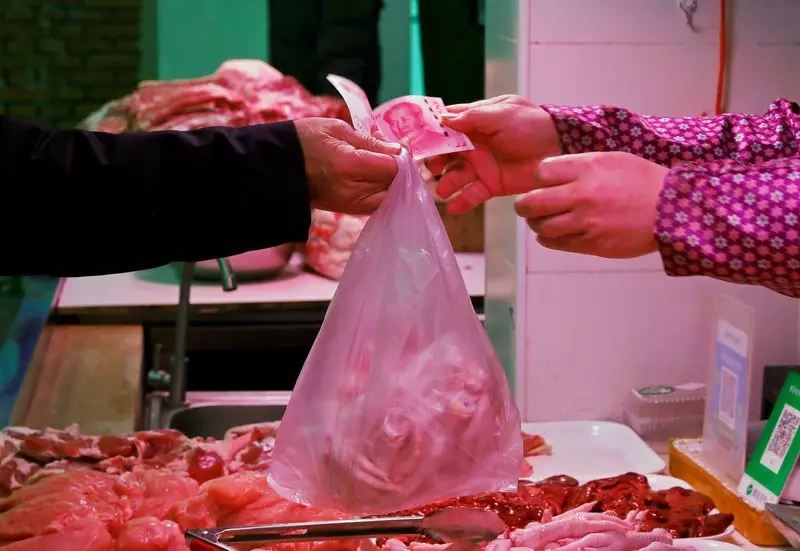In 2024, China’s economic indicators reveal a complex picture characterized by stagnant consumer prices combined with a continuing decline in factory-gate prices. The latest report from the National Bureau of Statistics of China highlights that the annual consumer price index (CPI) experienced a scant increase of 0.2%. This marks a significant stability in inflation rates, mirroring the previous year’s figures and significantly falling short of the government’s aspirational target of approximately 3%. Such results underscore a prolonged period where inflation has consistently failed to meet official benchmarks for over a decade, reflecting deeper systemic issues within the economy.
The CPI’s modest improvement is further contextualized by a year-over-year rise of only 0.1% in December, underscoring a deceleration compared to November, where it had recorded a slightly better increase of 0.2%. Alarmingly, this is the most subdued inflation rate seen since April of the same year. In contrast, core inflation—which strips out the more volatile food and energy prices—showed a marginal increase to 0.4%, hinting at slight pressure on non-essential consumer prices, but still projecting an overall trend of sluggish demand.
The economic landscape facing China is significantly influenced by a combination of domestic and international pressures. Factors such as job insecurity, a continuing slump in the housing market, and potential tariffs linked to the new U.S. administration under President-elect Donald Trump are dampening consumer confidence and spending. Despite the Chinese government investing in stimulus measures aimed at revitalizing the economy, demand remains tepid.
The persistent decline in the producer price index (PPI)—which dropped by 2.3% year-on-year in December—further elucidates the challenges faced by manufacturers. For 27 consecutive months, factory-gate prices have remained in deflationary territory, illustrating a broader erosion of pricing power within the sector. Here, the relationship between consumer spending power and production costs is palpable; as consumers tighten their belts, manufacturers have less room to operate profitably.
Consumer behavior is gradually evolving in response to these economic hardships. The sustained deflation is particularly evident in sectors like retail, where discounting has expanded beyond traditional areas, affecting everything from bubble tea to other discretionary purchases. Consumers are exhibiting a discernible shift towards rental or sharing economies, choosing to rent goods such as cameras and handbags rather than making outright purchases. This indicates a broader trend of caution and a focus on essential spending rather than luxury or non-essential items.
Commentators, such as Zhang Zhiwei, President and Chief Economist at Pinpoint Asset Management, emphasize that the outlook for inflation is heavily contingent upon the efficacy of fiscal policies implemented by the government. Consumers’ reluctance to spend is further exacerbated by the ongoing malaise in the property sector, which continues to exert downward pressure on overall consumer sentiment.
In light of these challenges, financial institutions such as the World Bank have revised their forecasts for China’s economic growth for 2024 and 2025. However, they caution that diminished household and business confidence, together with ongoing difficulties in the property market, are significant impediments that could stifle economic momentum.
In an aggressive bid to stimulate growth, the Chinese government has commenced a historic $411 billion program of special treasury bond insurance. This initiative signals an enhanced commitment to fiscal stimulus aimed at bolstering business investment and consumption. The planned increase in ultra-long treasury bonds in 2025 is indicative of a strategic pivot to foster growth in consumer sectors, especially given that a portion of these funds is earmarked for renovating outdated equipment and incentivizing trade-in programs for consumer goods, including automobiles.
As China navigates through 2024, the interplay between weak consumer demand, producer price deflation, and government stimulus initiatives paints a nuanced picture of an economy at a crossroads. With underlying challenges persisting and structural reforms necessary, the path towards robust economic recovery remains cautious. Future success hinges not only on the effectiveness of fiscal measures but also on restoring consumer confidence—an area that requires delicate balancing in a volatile global economic landscape.

